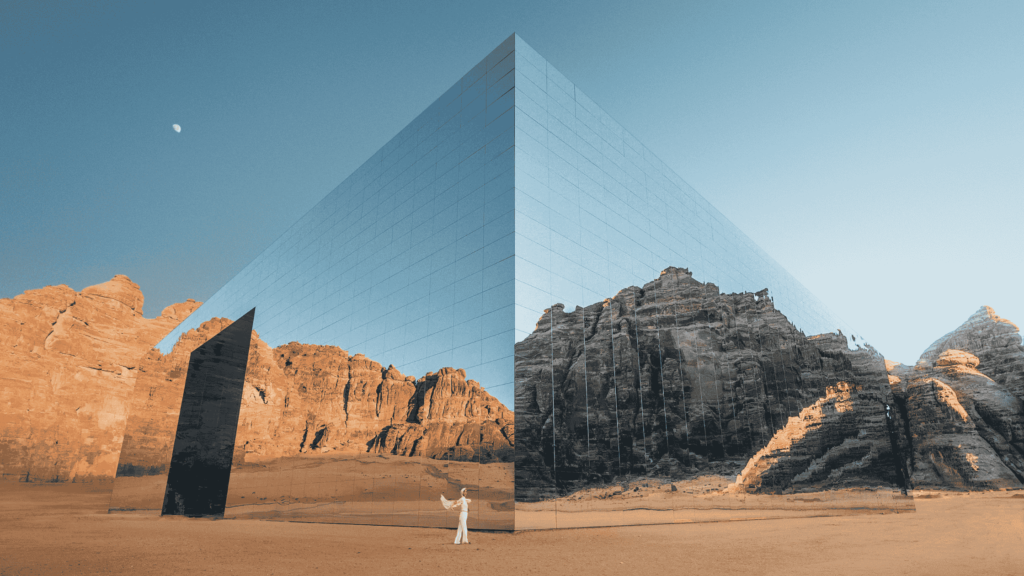Hosting the 2034 FIFA World Cup is more than a sports milestone for Saudi Arabia; it’s a transformative event poised to redefine the Kingdom’s real estate landscape. This global stage is aligned with Vision 2030, pushing urban development, economic growth, and international partnerships. Let’s delve into how Saudi Arabia’s real estate sector is set to capitalize on this monumental opportunity.
Stadiums as Real Estate Anchors
The World Cup is driving significant investment in state-of-the-art stadiums, which are designed to serve as multi-purpose venues beyond the tournament.
Futuristic Stadiums
Saudi Arabia plans to build 11 cutting-edge stadiums featuring modular designs, advanced cooling systems, and eco-friendly technology like solar power and water recycling systems. These venues will anchor broader real estate developments, including hotels, retail spaces, and residential communities. Read more about FIFA’s green stadium initiatives here.
Mixed-Use Developments
Surrounding these stadiums, projects like Riyadh’s Qiddiya Entertainment City aim to create vibrant mixed-use districts that integrate entertainment, leisure, and living spaces. These developments are expected to generate sustainable economic benefits for years to come.
Transformative Urban Development
The World Cup is accelerating urban transformation in key cities, enhancing their appeal to residents, businesses, and investors alike.
NEOM and The Line
The futuristic city of NEOM and its flagship project, The Line, exemplify Saudi Arabia’s commitment to innovation. These developments promise zero-emission living spaces, AI-driven urban planning, and unparalleled luxury. Properties in NEOM are already attracting international investors. Learn more about NEOM’s vision here.
Diriyah Gate Project
In Riyadh, the Diriyah Gate Development blends heritage with modernity, offering luxury residences and high-end retail spaces. This project is not just a cultural hub but also a lucrative investment opportunity for global buyers.
High-Speed Connectivity
The Kingdom is investing heavily in high-speed rail systems linking cities like Riyadh, Jeddah, and NEOM. Enhanced connectivity boosts real estate values by making properties more accessible. For insights on Saudi transport projects, visit Vision 2030’s official site.
Economic Impacts on Real Estate
The economic ripple effects of the 2034 World Cup are vast, with real estate standing out as a key beneficiary.
Tourism and Hospitality Boom
The influx of millions of visitors will fuel demand for hotels, serviced apartments, and short-term rental properties. Areas near stadiums and cultural hubs are expected to see a surge in rental yields. Learn about Saudi’s tourism transformation here.
Rising Property Values
Prime real estate markets, particularly in Riyadh, Jeddah, and NEOM, are witnessing a surge in property values, projected to grow by 20-25% over the next decade. This growth is driven by the development of luxury villas, commercial spaces, and sustainable housing.
Commercial Opportunities
The World Cup is attracting multinational corporations, increasing demand for office spaces and co-working hubs in Riyadh’s financial district. Discover investment guides for Saudi Arabia here.
Challenges and Mitigation
While the World Cup brings immense opportunities, it also presents challenges that require strategic planning.
Sustainability Goals
The environmental footprint of large-scale construction is a concern. Saudi Arabia is integrating green building practices to ensure sustainability. For details on FIFA’s environmental impact goals, visit this link.
Labor and Human Rights
Critics have raised concerns about labor practices and human rights in Saudi Arabia. Hosting the World Cup offers an opportunity to address these issues through reform and global dialogue. Read more about these challenges here.
Post-Tournament Utilization
Ensuring that infrastructure is effectively utilized post-tournament is crucial to avoid underperformance. Saudi Arabia plans to repurpose facilities for community use, sports training, and cultural events.
Legacy and Long-Term Benefits
The 2034 World Cup’s legacy extends beyond infrastructure; it’s about repositioning Saudi Arabia on the global stage.
Cultural Showcasing
The tournament is a platform to highlight Saudi Arabia’s rich heritage and modern outlook. Initiatives like cultural festivals will attract global audiences and reshape perceptions of the Kingdom. Explore Saudi culture here.
Global Investment Hub
Saudi Arabia’s enhanced infrastructure, business-friendly policies, and strategic location make it a prime destination for international investments.
Conclusion
The 2034 FIFA World Cup is a turning point for Saudi Arabia, driving urban transformation and economic growth while positioning the Kingdom as a global real estate and cultural hub. By addressing challenges with innovative solutions, Saudi Arabia is ensuring a lasting legacy that aligns with Vision 2030. For more on Saudi Arabia’s future, visit Vision 2030’s website.





